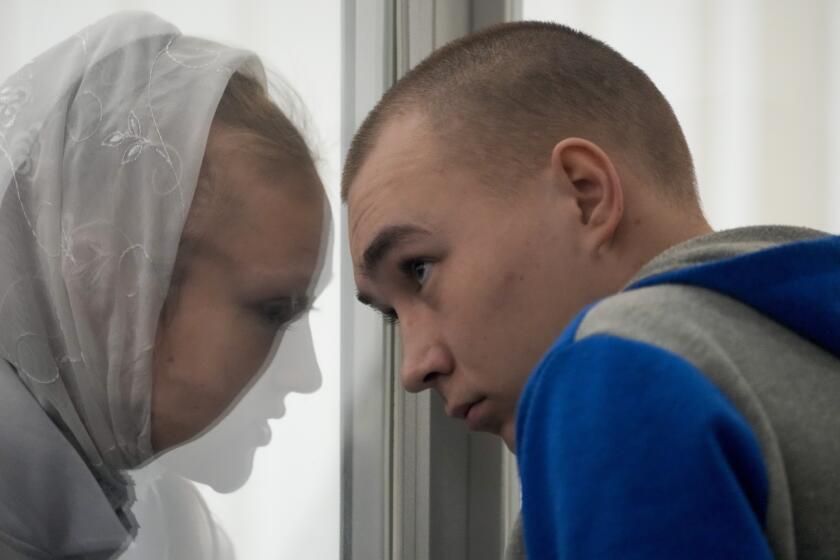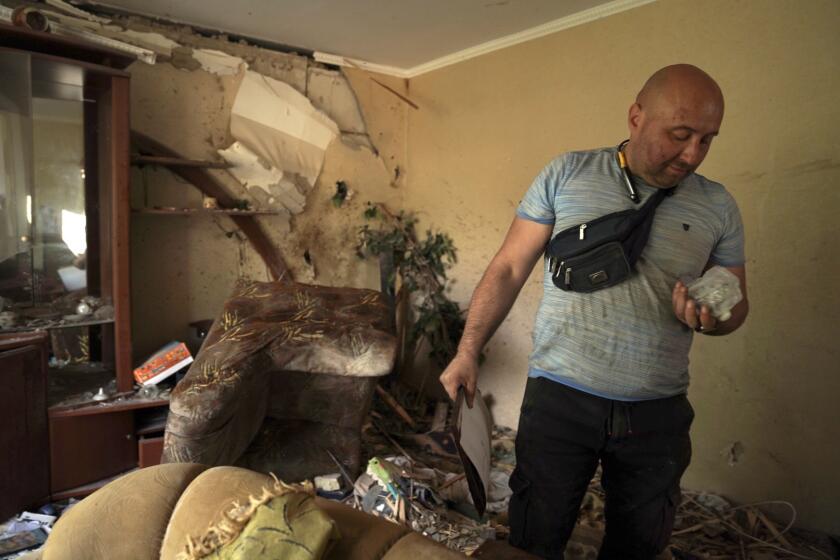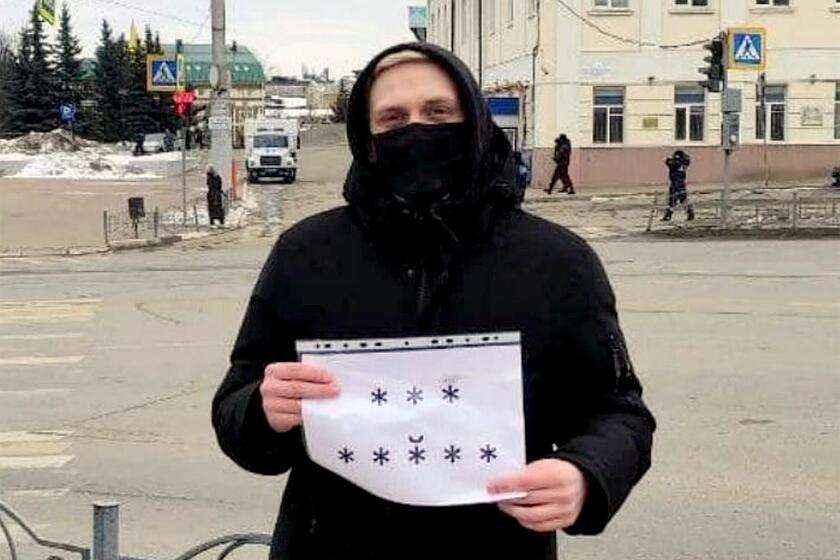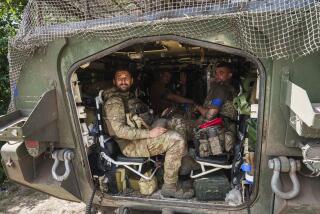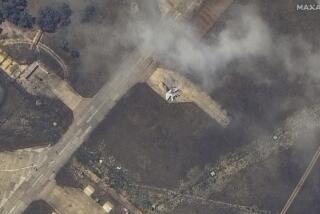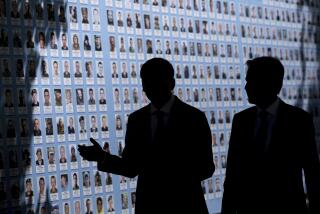Russian troops move to encircle strategic city in eastern Ukraine

KYIV, Ukraine — As the conflict in Ukraine enters its fourth month, Russian troops appeared Tuesday to be on the cusp of a breakthrough in the disputed Donbas region, with Ukrainian President Volodymyr Zelensky warning of difficult weeks ahead.
Russian forces have launched a campaign to encircle Severodonetsk — the easternmost point of the Donbas still under Ukrainian control — along with its sister city, Lysychansk, just to the south.
By Tuesday morning, after days of withering artillery duels along the eastern front, Russian troops were reported to have seized portions of Lyman, a town roughly 30 miles west of Severodonetsk, and blitzed into the village of Zolote, south of Lysychansk. Those attacks and a Russian stab from north of Severodonetsk form a three-pronged offensive to take the city.
“The intensity of fire on Severodonetsk has increased by multiple times — they are simply destroying the city,” Luhansk Gov. Serhiy Haidai said in a TV interview. He echoed Zelensky’s overnight address to the nation, which accused Russian forces of “trying to destroy all living things” in the east.
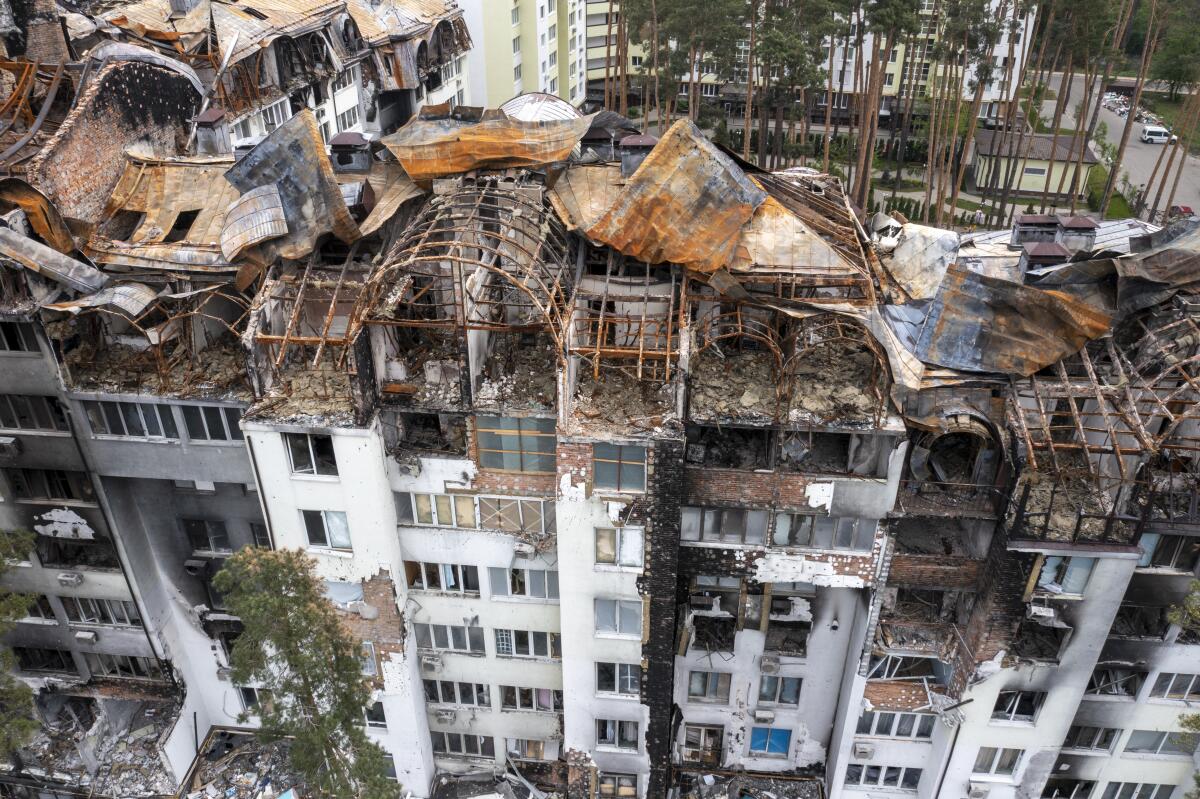
“Literally,” Zelensky said. “Nobody destroyed Donbas as the Russian military does now.”
At the same time, authorities in Mariupol, which Russia now controls in its most significant gain of the war, announced the gruesome discovery of 200 bodies in the basement of a collapsed apartment building. Russia’s onslaught has left the southeastern port city nearly obliterated.
Zelensky also cited a Russian missile barrage that struck the village of Desna last week in northern Ukraine, killing 87 people in one of the war’s deadliest single attacks, as he appealed for more arms from the U.S. and other supportive nations.
The 21-year-old soldier had pleaded guilty to fatally shooting a Ukrainian civilian, which he said was an order from a superior officer.
“Every time we tell our partners that we need modern antimissile weapons, modern combat aircraft, we are not just making a formal request,” he said. “We say that our request is the real lives of many people who would not have died if we had received all the weapons we are seeking.”
Meanwhile, Russian Defense Ministry spokesman Maj. Gen. Igor Konashenkov said Tuesday that Russian airstrikes destroyed a depot in the Donbas used to store U.S.-produced M777 howitzer artillery shells. The United States has fast-tracked deliveries of the artillery to Ukraine in recent weeks as part of a larger lend-lease program.
The ministry also said Russian sappers had de-mined a section of the coast of the Sea of Azov adjacent to the port of Mariupol, the Russian news agency Tass reported.
Even amid the deteriorating military situation in the east, signs of prewar life were returning to other parts of Ukraine. In Kharkiv, the target of a recently repulsed Russian onslaught that forced authorities to turn the northeastern city’s metro system into a bomb shelter, subways were running again, said Mayor Igor Terekhov on the messaging app Telegram.
It’s been almost two months since Russian forces retreated from the outskirts of Kyiv, ending plans for a quick takeover, but devastation lingers.
A sense of normality has also come to the capital, Kyiv, just two months after Russian tanks were massing on its outskirts. Ukrainian forces managed to keep them out, forcing Moscow to withdraw and redeploy its troops to the east.
Despite the military setbacks in the Donbas, a feeling of triumph seems prevalent in Kyiv as those who fled the city in the early days of the war pour back. In recent days, residents have come out in large numbers to view a public war trophy: the remnants of destroyed Russian tanks and other Russian war paraphernalia put on display in central St. Michael’s Square, in front of the majestic golden-domed church honoring the saint.
In a carnival-like atmosphere, people take selfies with the military ruins and hoist children and pets atop the charred tanks. Signs at the site implore other nations to aid Ukraine in its bid to drive back its behemoth neighbor.
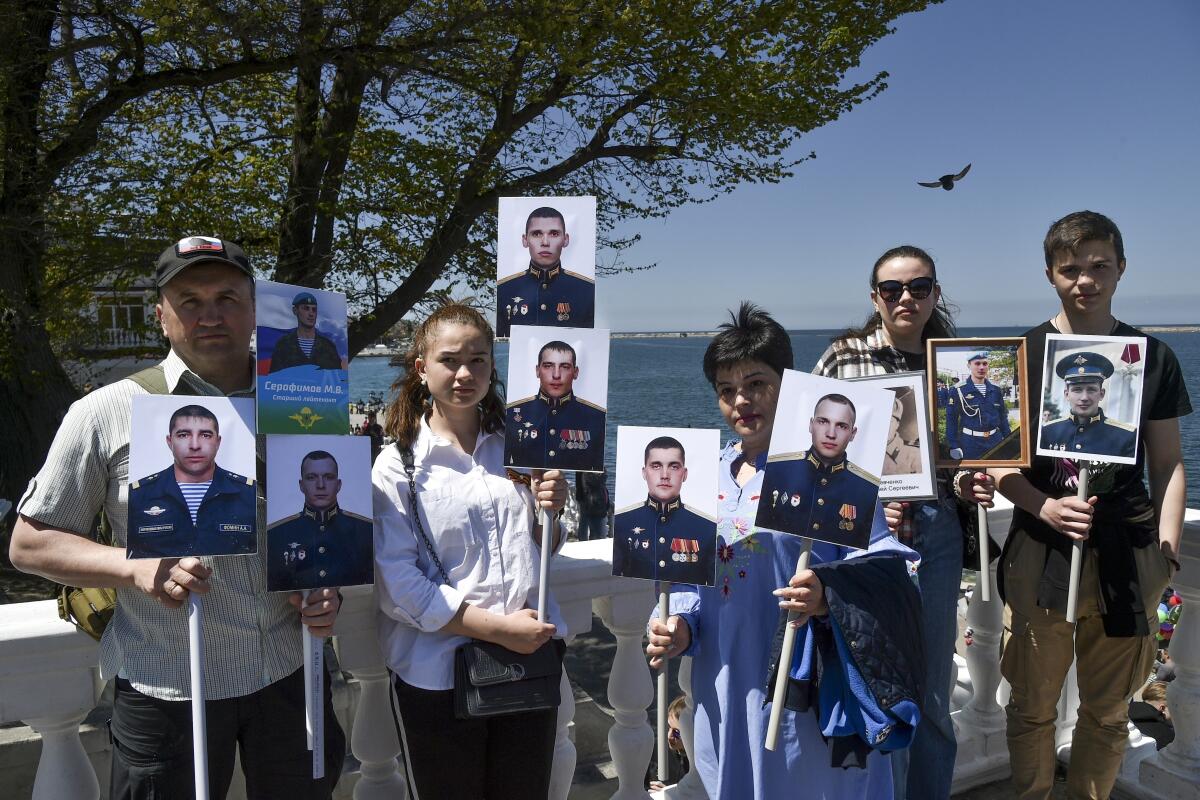
“It’s a bit scary, the smell of death,” said Anna Ursu, 22, who came to see the battered tanks Tuesday with her 2-year-old daughter. “At the same time, there is joy that these were destroyed by our defenders. It is because of them that we are able to be here looking at this.”
Accompanying her was a friend, Nadia Reznikova, 23, originally from the battered Luhansk province. Luhansk and Donetsk provinces make up the Donbas, the eastern industrial heartland.
“Yes, the battle in the east is hard, but I believe Ukraine will triumph, especially if NATO closes the skies,” said Reznikova, referring to a common wish among Ukrainians — that the U.S.-led alliance impose a no-fly zone over Ukraine to thwart Russian air power.
Start your day right
Sign up for Essential California for the L.A. Times biggest news, features and recommendations in your inbox six days a week.
You may occasionally receive promotional content from the Los Angeles Times.
President Biden and other Western leaders have rejected such a move, fearing it would lead to direct fighting between the North Atlantic Treaty Organization and Russian forces and the possibility of nuclear war.
“We can only hope,” said Reznikova, gazing at the destroyed Russian war machines along with her daughter, 4, as the chimes from nearby St. Michael’s played the Ukrainian national anthem. “I am hopeful we will be victorious.”
Foreign Minister Dmytro Kuleba pleaded for more military aid, saying Ukrainian troops needed multiple-launch rocket systems, long-range artillery and armored personnel carriers.
“Russian offensive in the Donbas is a ruthless battle, the largest one on European soil since WWII. I urge partners to speed up deliveries of weapons and ammunition,” Kuleba tweeted Tuesday.
Also Tuesday, Kuleba spoke with his U.S. counterpart, Secretary of State Antony J. Blinken, about the Russian seaport blockade of Ukrainian food exports, including wheat and other grains, which threatens to starve numerous populations worldwide.
Russia has positioned warships in the Black Sea and Sea of Azov to prevent Ukraine from exporting grains, cooking oil and fertilizers to the world, sending prices soaring and shortages spreading. Russia and Ukraine together account for nearly a third of the global wheat supply.
At least 25 million tons of wheat are trapped in Ukraine, according to the United Nations, leading Blinken to accuse Russia of weaponizing food and holding supplies “hostage” for its military benefit.
As Russia fines and arrests citizens for speaking out against the war in Ukraine, people are turning to coded messages.
While on a swing through Asia this week, President Biden signed bipartisan legislation granting an additional $40 billion in assistance to Ukraine. At a summit Tuesday in Tokyo with the leaders of Japan, Australia and India, Biden condemned Russia’s “brutal and unprovoked war against Ukraine” for triggering a humanitarian catastrophe.
“We’re navigating a dark hour in our shared history,” Biden said. “The world has to deal with it, and we are.”
Surrounding Severodonetsk would enable Russia to trap Ukrainian troops defending the area and open a path to Kramatorsk, the Ukrainian government’s main administrative and military node in the east.
Despite recent Russian advances, three months of warfare have brought only limited progress for the Kremlin in its plan to take over Ukraine’s east. Russian Defense Secretary Sergei Shoigu chalked up the slow pace to Moscow seeking to limit civilian casualties.
“Cease-fires are being declared and humanitarian corridors are being created in order to get people out of the surrounded settlements,” Shoigu said at a meeting of defense ministers from some former Soviet bloc nations, according to a report from Russia’s state-owned RIA news agency.
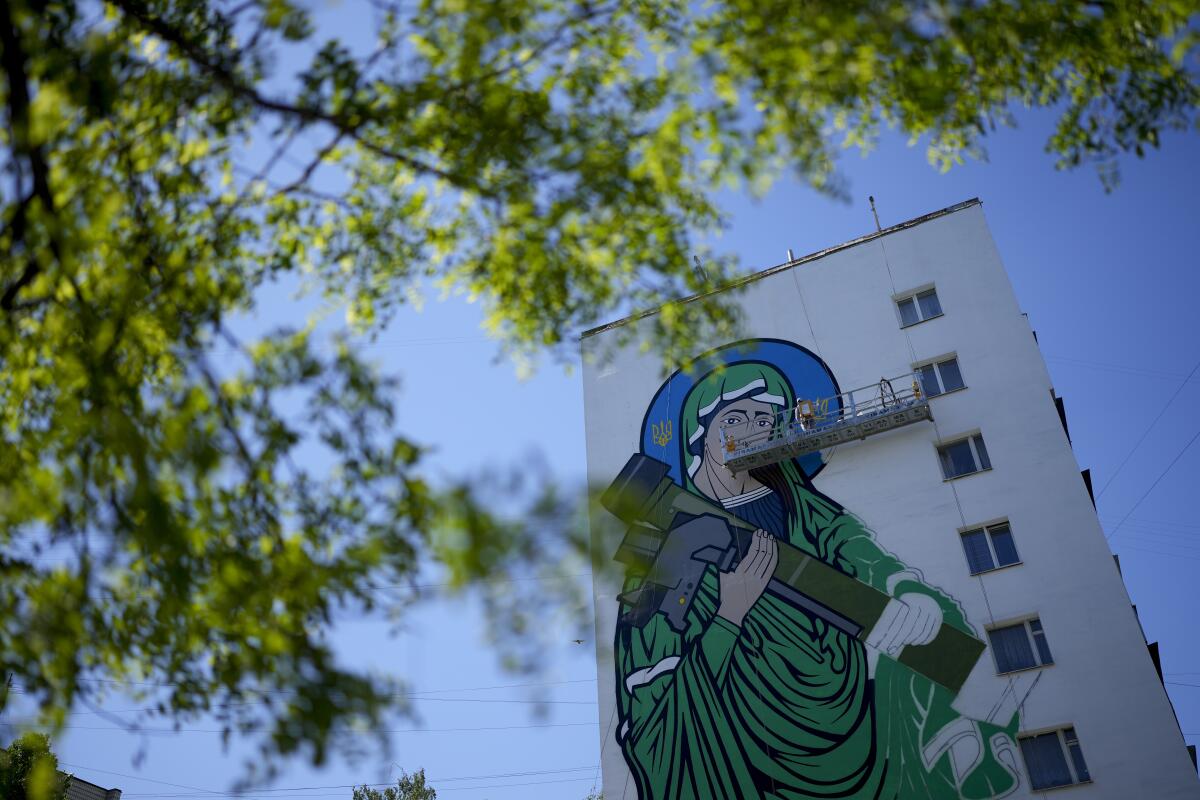
“Of course, this slows down the pace of the offensive, but this is done deliberately to avoid casualties among the civilian population,” Shoigu said, adding that Russia would “continue the special military operation” — its term for the war — “until all tasks are completed.”
The Office of the United Nations High Commissioner for Human Rights says almost 4,000 civilians have been killed and more than 4,500 injured since Russia launched its invasion Feb. 24. Those figures are probably undercounts, the agency says.
The war has also left many of Ukraine’s major cities and wide swaths of its countryside in ruins.
Russia’s objectives in Ukraine “will be fulfilled” without worrying about deadlines, Nikolai Patrushev, head of Russian President Vladimir Putin’s Security Council, said in an interview Tuesday with a Russian weekly newspaper, adding that “Nazism must either be 100% eradicated, or it will rear its head in a few years, and in an even uglier form.”
Moscow falsely claims that Ukraine is controlled by a cabal of neo-Nazis who have orchestrated a genocide of the country’s ethnic Russian population.
McDonnell reported from Kyiv and Bulos from Beirut.
More to Read
Sign up for Essential California
The most important California stories and recommendations in your inbox every morning.
You may occasionally receive promotional content from the Los Angeles Times.
